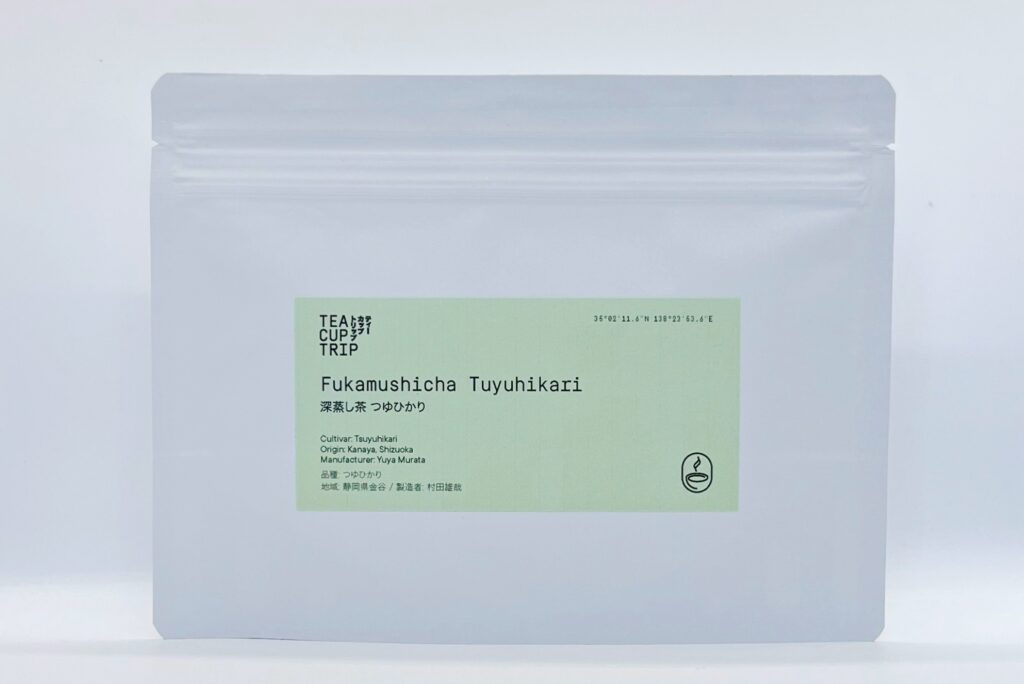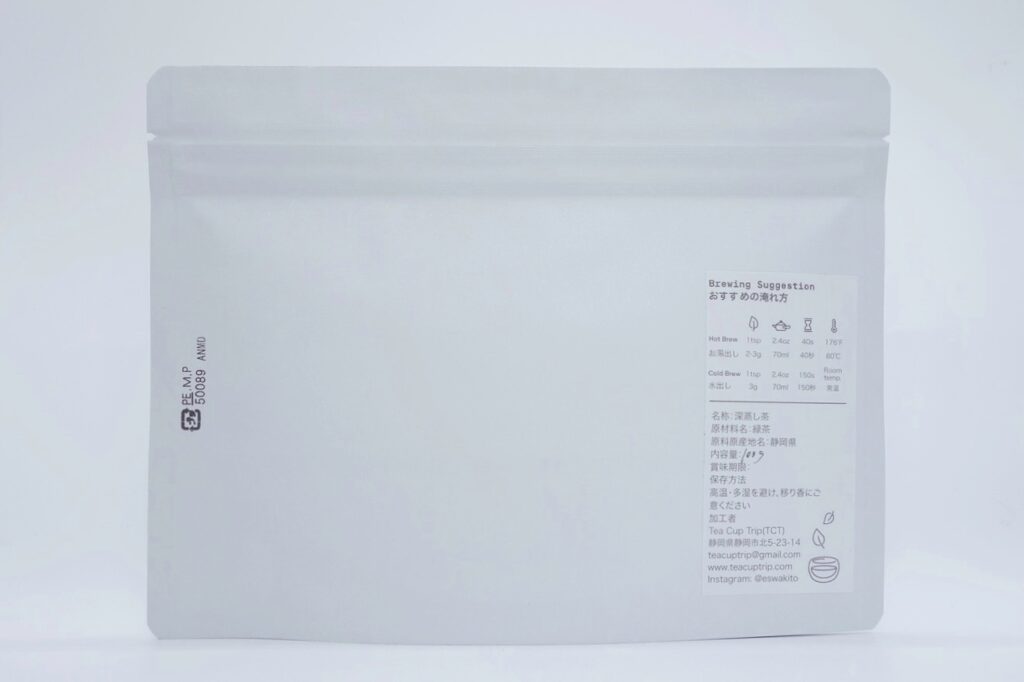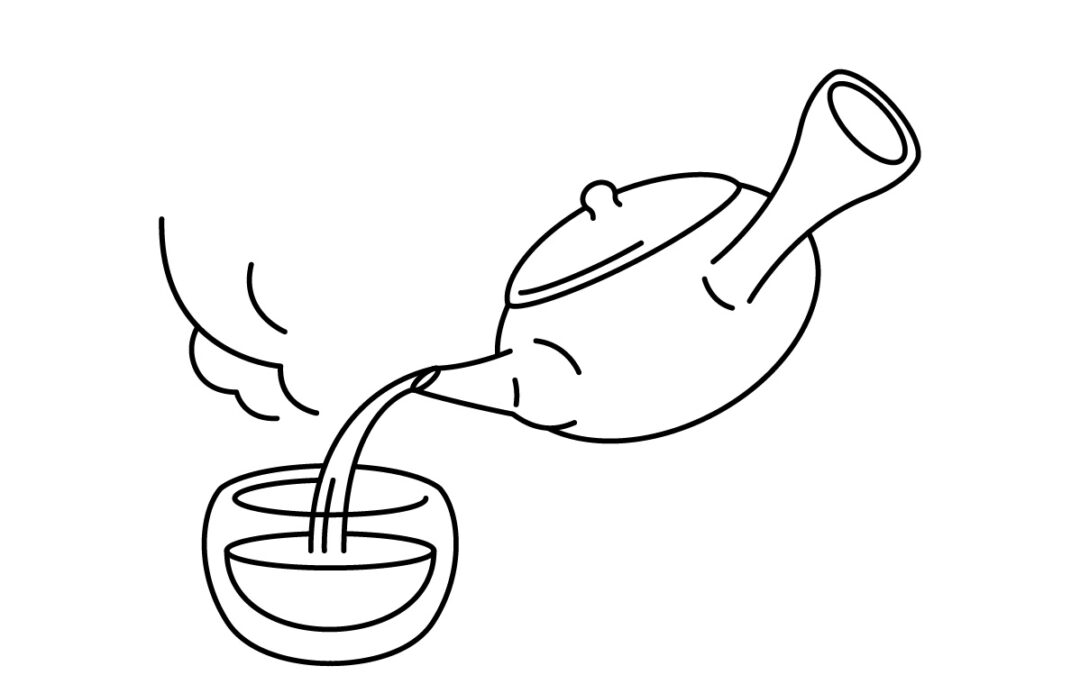Green tea, black tea, and oolong tea are the three major teas consumed around the world. In Japan, more than 99% of the tea produced is green tea*. Roughly speaking, while blacks and oolongs are aroma-oriented teas, the main characteristics of many Japanese green teas can be found in how they taste. Umami being an example of one that has a savory-sweet taste.
Brewing your Japanese tea with an understanding of its characteristics will make your tea time more enjoyable.
In this post, you will learn the tools for brewing Japanese tea, the ideal water, and how to brew each type of tea.
Reference: 全国茶生産団体連合会 令和2年茶種別生産実績
Items you will need to prepare
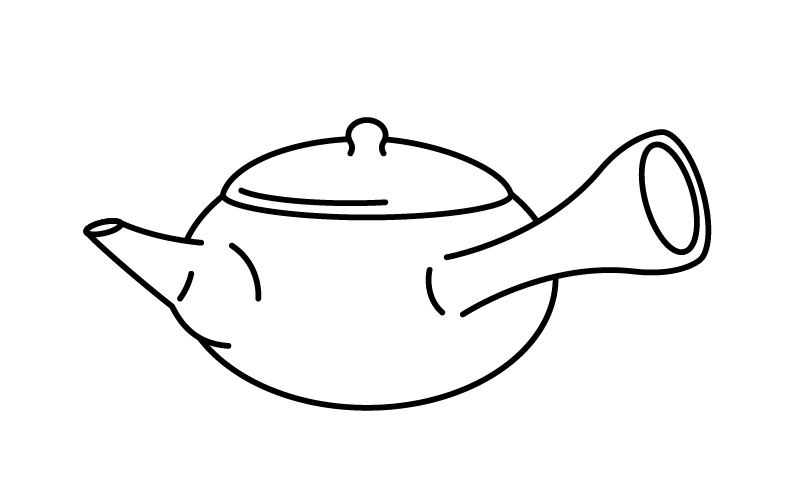
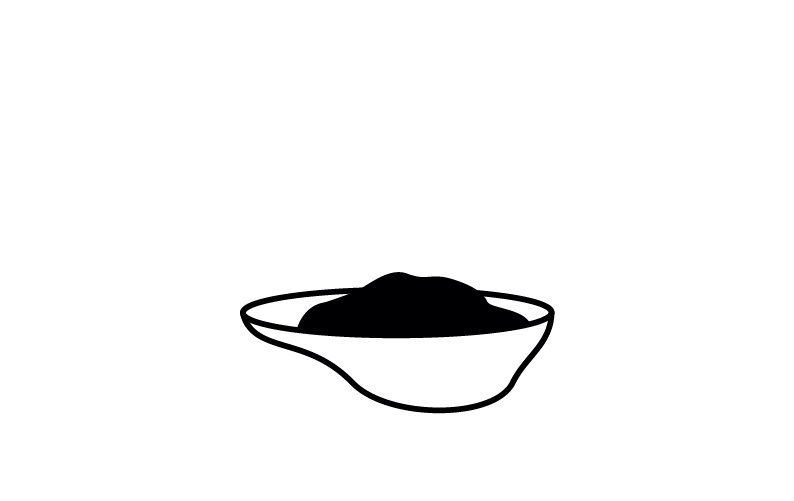
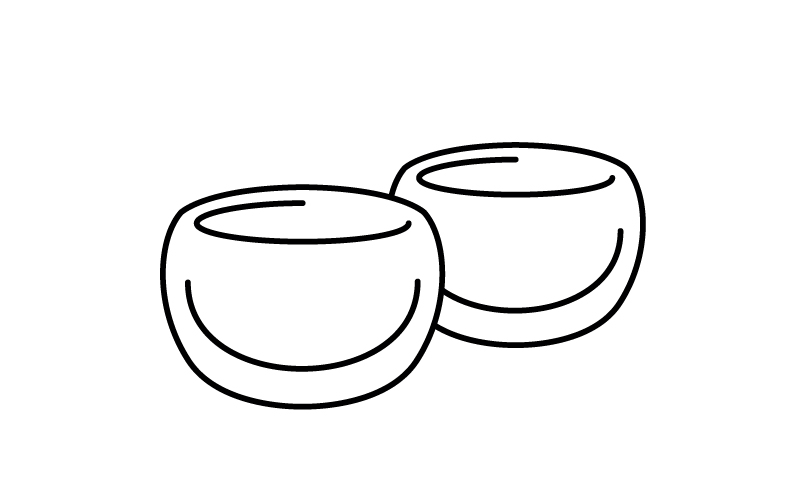
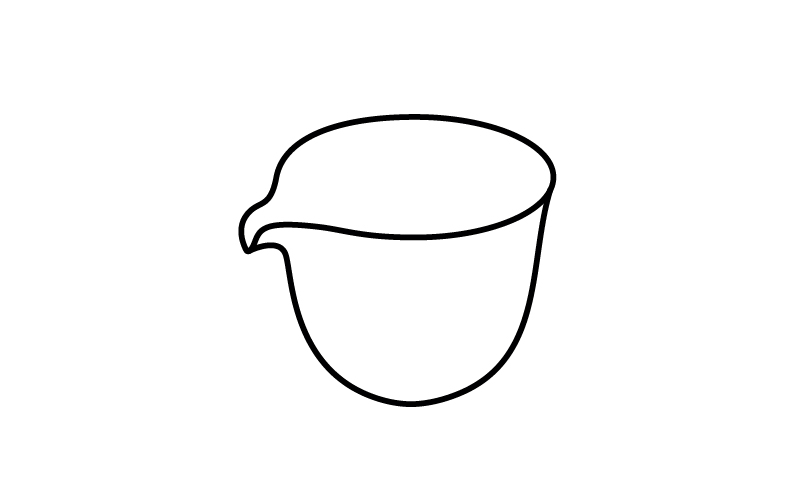
Water suitable for Japanese tea
Water choice for brewing tea is very important because 99% of the tea liquid is water. Soft water, which is low in pH and mineral content, or filtered water (boil for 5 min if it’s possible) is suitable for green tea so as to not destroy its delicate flavor.
Parameters for brewing tea
Here are the parameters for brewing tea:
- Amount of tea leaves
- Water amount
- Water temperature
- Steeping time
Of these parameters, water temperature greatly affects tea’s taste. This is because while lower-temperature water (even cold water) dissolves theanine, an amino acid that contributes to umami and sweetness, higher-temperature water dissolves not only theanine but also catechins and caffeine, which are responsible for bitterness and astringency.
Higher-temperature water also brings out tea’s aroma. So, you want to first brew at a lower temperature for teas rich in umami and sweetness, such as Gyokuro, Kabusecha, and spring harvested high-grade Sencha. Then, you can raise the water temperature for the next infusion to bring out the leaves’ astringency, bitterness, and aroma. On the other hand, you want to start with hot water for aroma-oriented teas with less umami such as black tea, oolong tea, and Japanese green teas like Hojicha, and Kamairicha.
The general parameters for each tea type are as below. They differ from the specific tea. The amount of tea leaves and water is for 1 small cup. Adjust them depending on the number of cups and the tea amount you want. You don’t have to follow these parameters precisely. Enjoy experimenting and find a flavor you like!
Tip:
If your tea is too weak, you want to use more tea leaves before you try to steep your tea longer. This is because a longer steep time can lead to a bitter cup of tea.
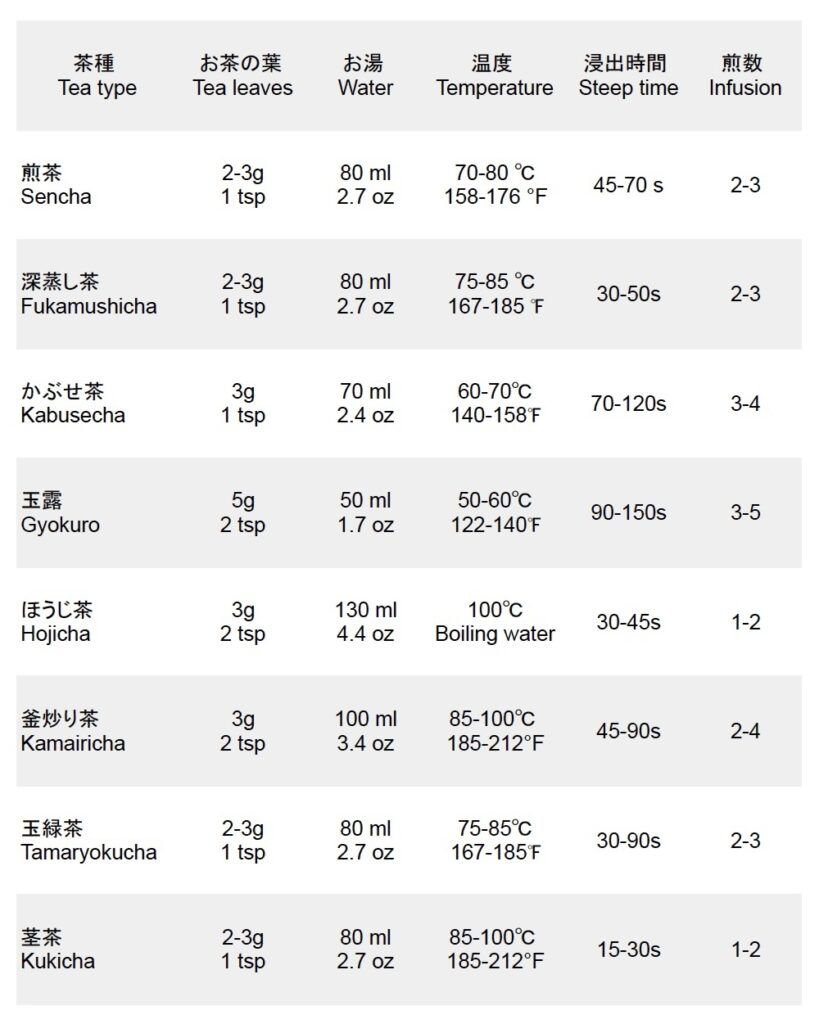
Each step of brewing tea
Following is the standard brewing method for Japanese green tea. Take this as a guideline and enjoy experimenting with the different parameters to find your perfect cup of tea.
Step 1
Pour boiling water from your kettle into your teacup to cool it down. This process enables you to do the following at the same time:
- Lower water temperature
- Measure the amount of hot water
- Warm up your teacup
Tip:
When you pour hot water from your kettle into your teacup, the temperature drops by about 10℃. Knowing this, you can adjust the temperature of the hot water without a thermometer. Yuzamashi makes it easier to cool down the water temperature. You can use a mug cup as an alternative.
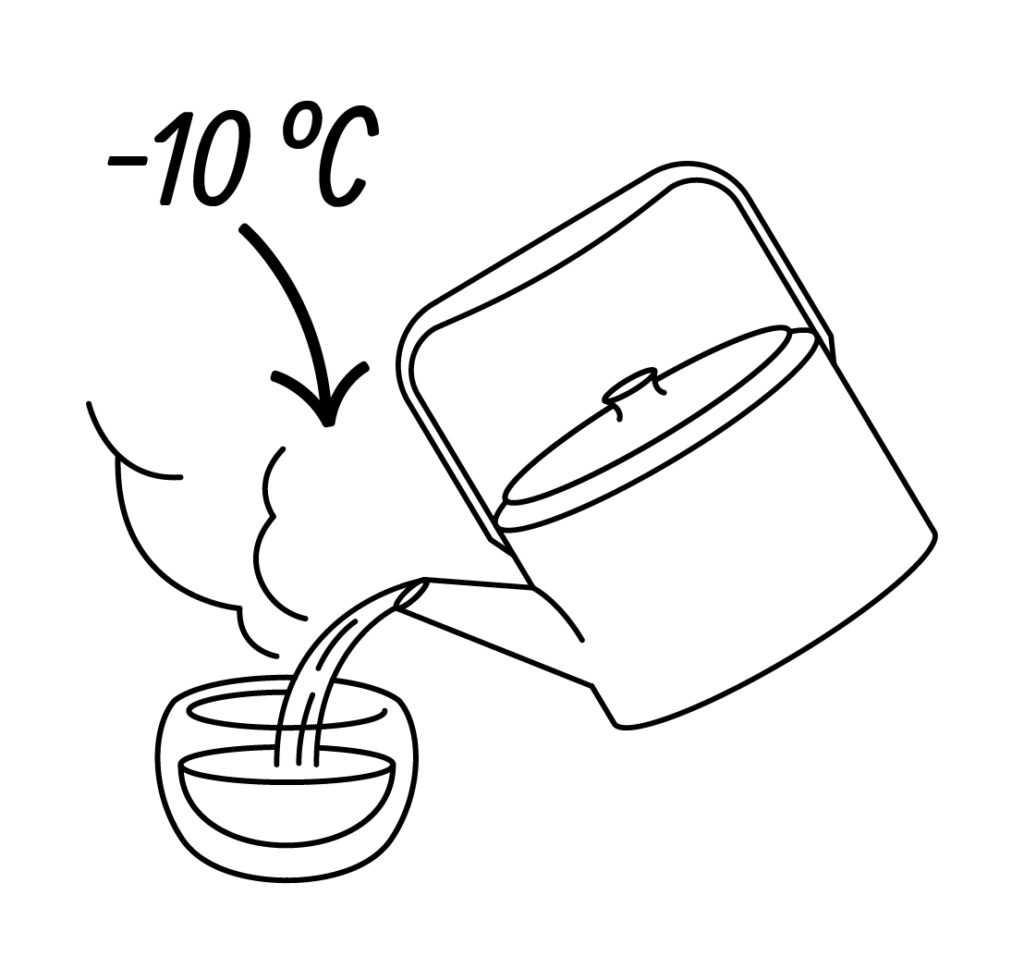
Step 2
Place the tea leaves into your teapot.
For Sencha, approximately 2-3g (one teaspoon) of tea leaves are used to make a small cup (80m/2.7ozl) of tea.
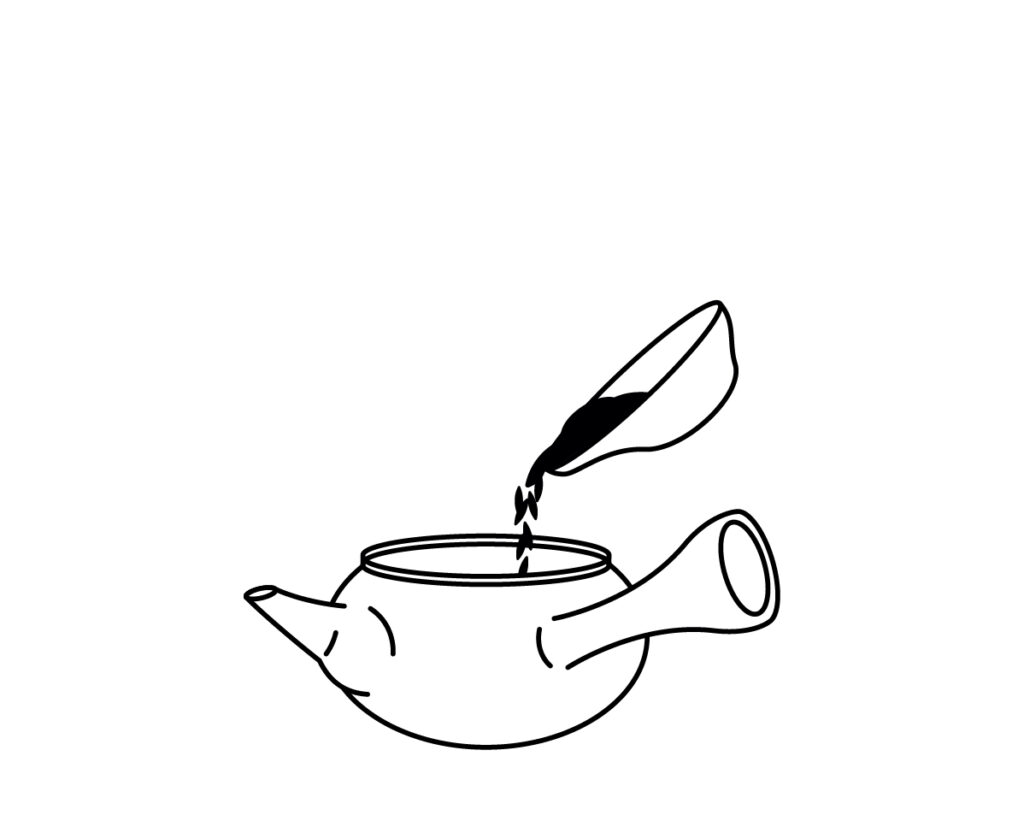
Step 3
Pour the warm water from your cup or yuzamashi over the tea leaves. The preferred water temperature for Sencha is usually between 70°C-80°C (158-176°F)
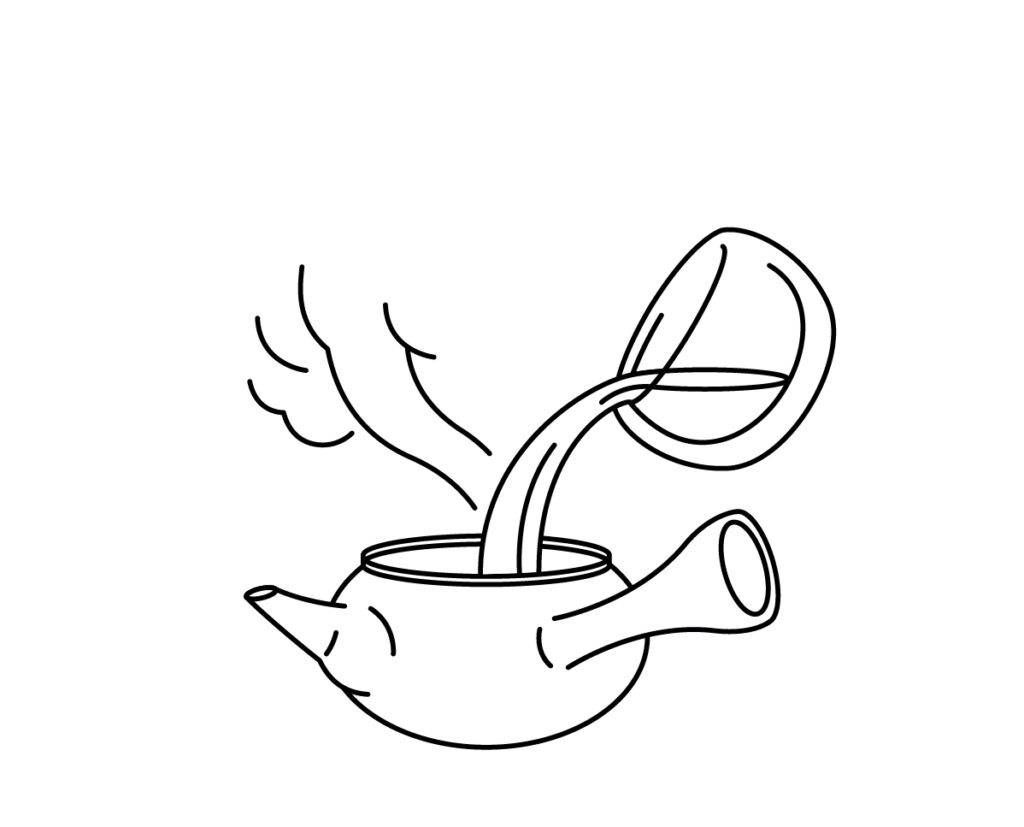
Step 4
Place the lid on your teapot and allow the tea leaves to steep for about one minute.
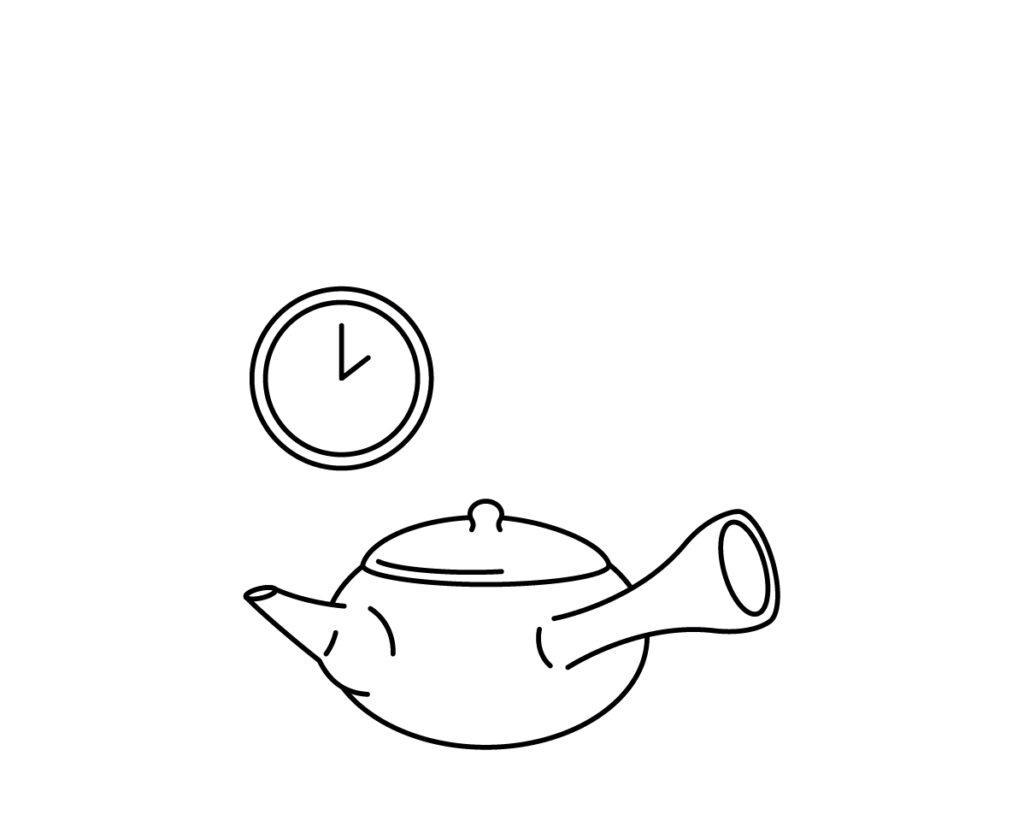
Step 5
Pour the tea into your cup.
Make sure to pour till the last drop of tea. This removes the water in the teapot, allowing you to enjoy the next infusion. Also, the last drop is the so-called golden drop and it’s said to have the richest nutrients and flavor:)
After the second infusion, raise the water temperature gradually to bring out the aroma and astringency and shorten the steeping time to avoid bitterness.
Tip:
For making tea for several people, start with pouring a small amount of tea into each cup, going back and forth till all the cups are evenly full, making sure each tea tastes the same. Or, an easier way is you pour tea into your yuzamashi, then pour it into each cup.
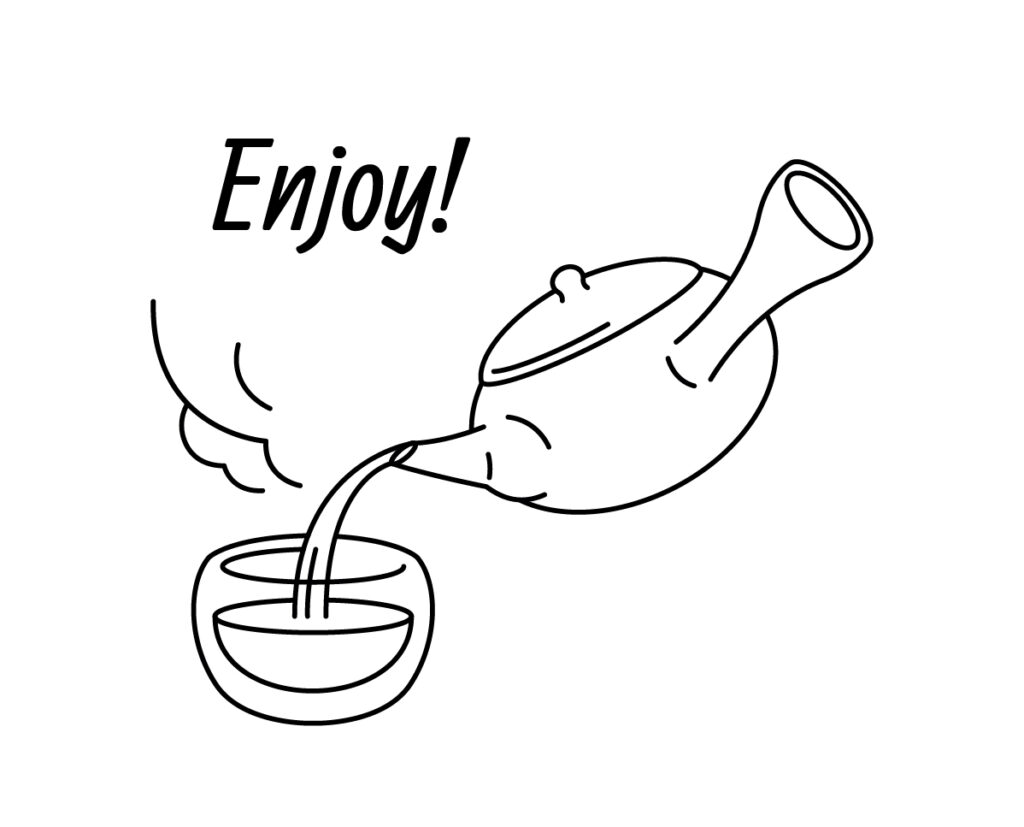
Our tea packaging
Our tea packaging is convenient for storing your tea; It’s made specifically for storing tea and comes with a zipper.
